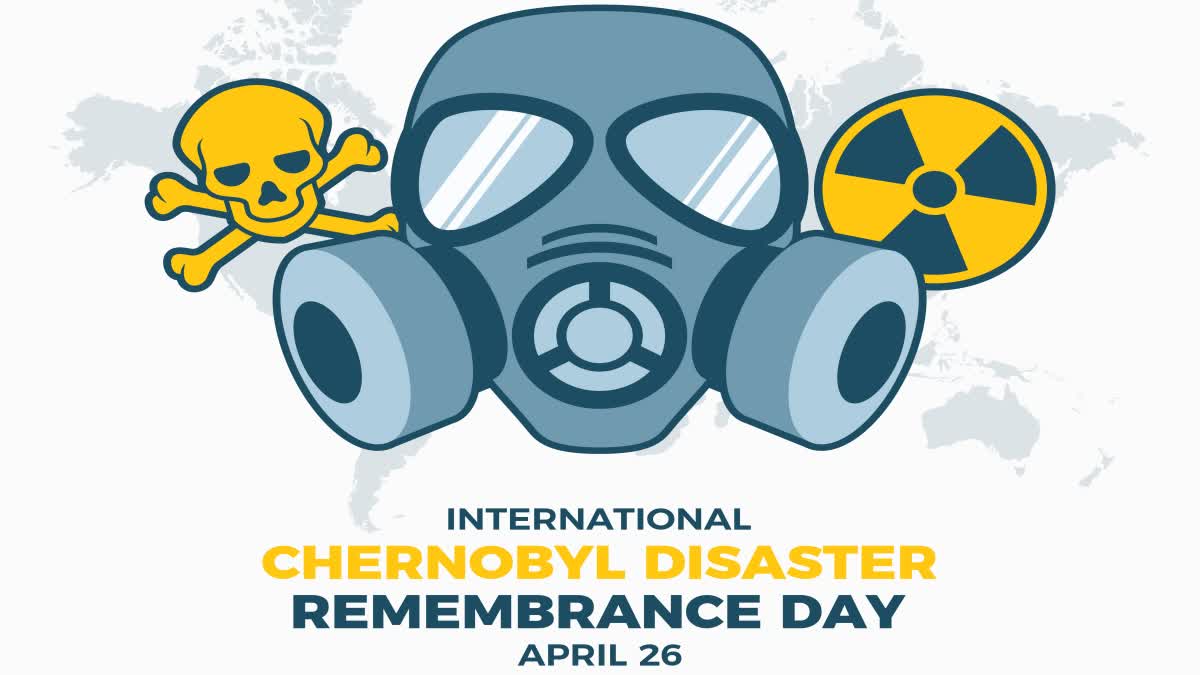Hyderabad: The International Chernobyl Disaster Remembrance Day, observed on April 25 every year across the globe marks the anniversary of this historic nuclear accident. The day also focuses on the prevention of future nuclear disasters.
History of the Day
The Soviet Government acknowledged the need for international assistance in 1990. That same year the General Assembly adopted a resolution, calling for “international cooperation to address and mitigate the consequences at the Chernobyl nuclear power plant.”
An Inter-Agency Task Force was established to coordinate the Chernobyl co-operation. In 1991 the UN created the Chernobyl Trust Fund. Since 1986, the UN family of organizations and major NGOs have launched more than 230 different research and assistance projects in the fields of health, nuclear safety, rehabilitation, environment, production of clean foods and information.
In 2002 the United Nations announced a shift in the Chernobyl strategy, with a new focus on a long-term developmental approach. UNDP and its regional offices in the three affected countries took the lead in the implementation of the new strategy. There is still a great deal of work that needs to be done in the affected region. To provide support to international, national and public programmes targeted at the sustainable development of these territories, in 2009 UN launched the International Chernobyl Research and Information Network (ICRIN).
On December 8, 2016, the United Nations General Assembly adopted a resolution designating April 26 as International Chernobyl Disaster Remembrance Day.
What was the Disaster?
An explosion at the Chernobyl Nuclear Power Plant in 1986 spread a radioactive cloud over large parts of the Soviet Union, now the territories of Belarus, Ukraine and the Russian Federation. Nearly 8.4 million people in the three countries were exposed to the radiation.
Impact of the Incident
Radiation releases from the accident continued for about 10 days, and the fallout spread from Chernobyl to the surrounding territories and across the globe. Following the Chernobyl accident, about 3,50,000 residents of Ukraine, Belarus, and Russia were evacuated and resettled in other areas of the Former Soviet Union. Sixty-four human deaths have been attributed to acute radiation sickness resulting from the accident, and estimates of ultimate excess cancer deaths are estimated to be 4000–9335, predominantly in workers who assisted with the clean-up of the Chernobyl power plant.
The heaviest amount of radiation was released into the first two plumes that killed about 400 ha of pine forest and likely eliminated resident wildlife populations in a 2 × 10 km area west of the reactor. Only about 1% of the radiation originally released still remains due to the rapid decay of most isotopes. Although there are reports of some genetic damage in organisms living in the contaminated habitats, there is no evidence of mutations that have been transferred to progeny. Evaluations in the aftermath of the Chernobyl accident led to numerous refinements to reactor operations and designs as well as methods to protect human populations.



